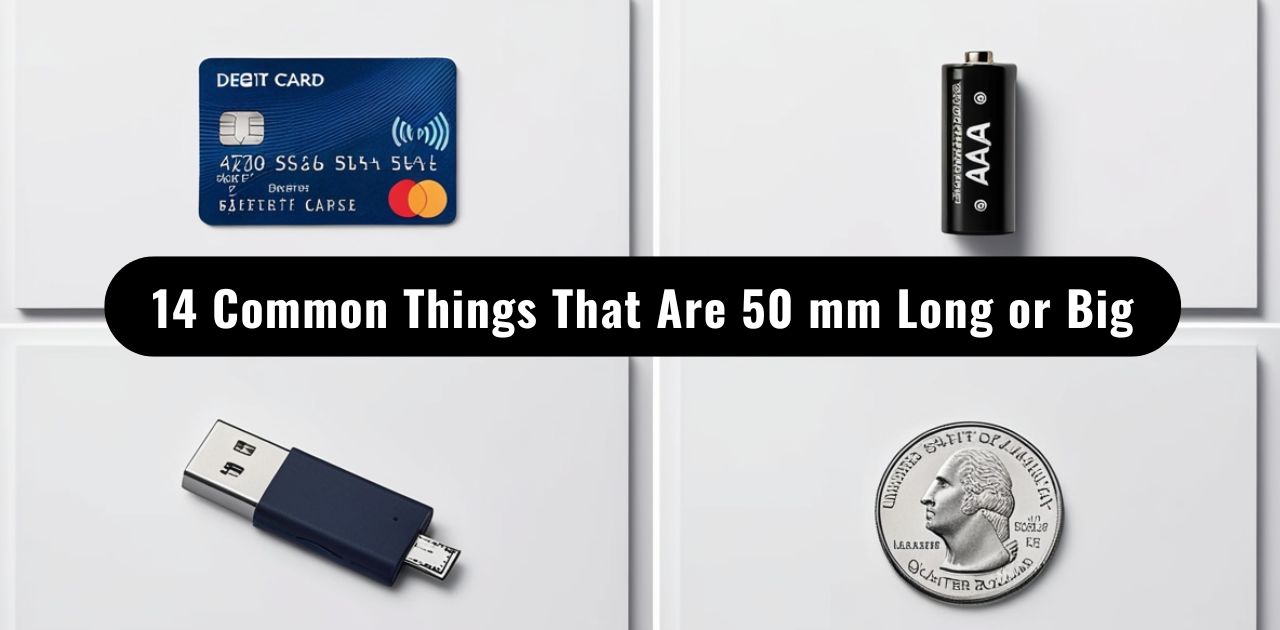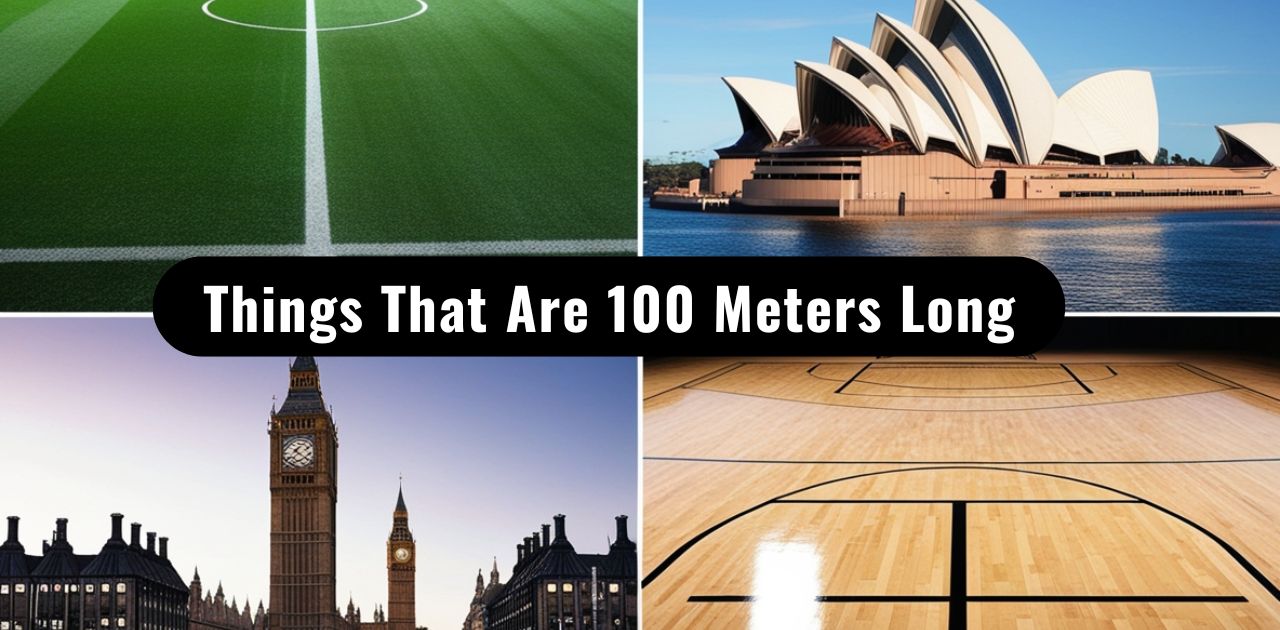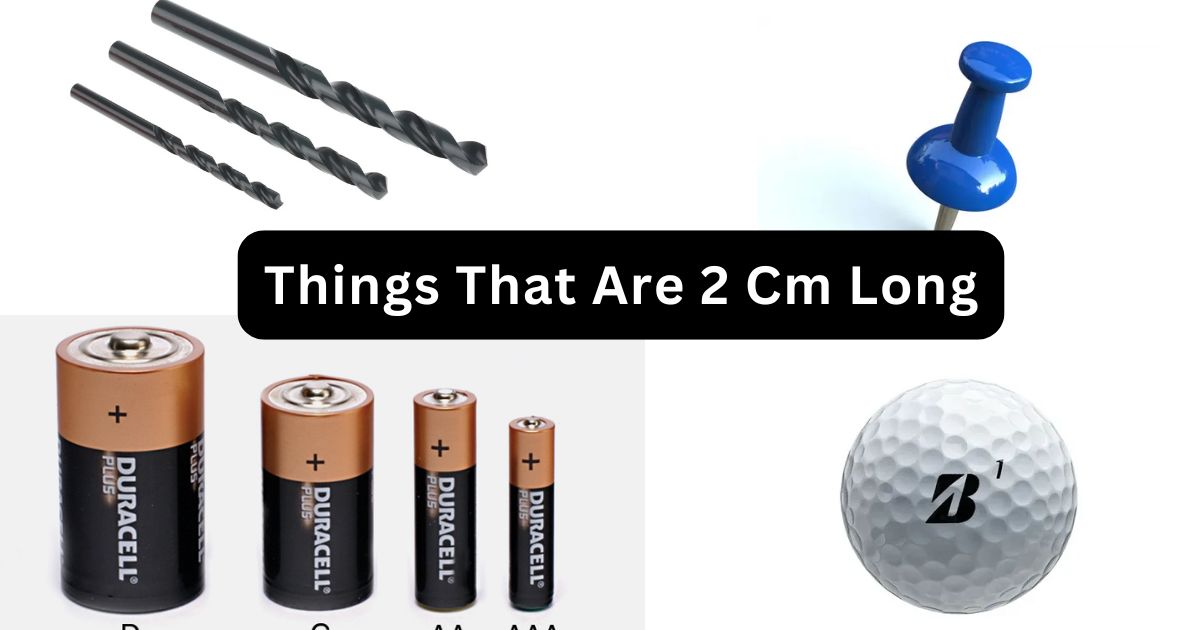In the intricate world of dimensional standards, 50 mm emerges as a remarkably ubiquitous measurement that silently underpins numerous aspects of our daily technological and practical experiences.
This precise length approximately two inches represents more than a mere numerical value; it embodies a critical design principle that engineers, manufacturers, and designers consistently leverage across diverse industries.
From compact tech accessories to essential office supplies, the fifty-millimeter dimension serves as a universal benchmark of functional optimization, revealing how seemingly minor measurements can profoundly impact product design, usability, and technological compatibility.
How Long is 50 mm?
Understanding precise measurements transforms our perception of everyday objects. Fifty millimeters, a dimension that might seem inconspicuous at first glance, represents a fascinating intersection of design, functionality, and practical utility.
Equivalent to approximately 2 inches or 5 centimeters, this precise measurement appears consistently across multiple objects we interact with daily, often without recognizing its significance.
Imagine holding something that’s exactly 50 mm long. It’s not too small to be insignificant, nor too large to be unwieldy. This measurement represents a sweet spot of usability that engineers, designers, and manufacturers frequently leverage across various industries. From technological devices to household tools, the fifty-millimeter dimension emerges as a universal constant that balances form and function.
The beauty of understanding 50 mm lies in its versatility. Whether you’re a professional needing precise measurements or simply curious about the dimensions of everyday objects, this guide will reveal how this seemingly modest length plays a crucial role in our daily lives.
We’ll explore fourteen common items that showcase the remarkable prevalence of this specific measurement, providing insight into the calculated precision underlying seemingly ordinary objects.
2 US Quarter Dollars

The humble US quarter dollar offers an exceptional real-world reference for visualizing fifty millimeters. Each quarter measures precisely 24.26 mm in diameter, creating an ingenious measurement technique accessible to anyone with loose change. When positioned side by side, two quarters create a near-perfect representation of the 50 mm dimension.
This simple method transforms an everyday currency item into a practical measurement tool. Imagine standing in a café, needing to estimate the size of a small object. Instead of searching for a ruler, you can quickly pull out two quarters and use them as an impromptu measuring device. Such practical applications demonstrate how standard measurements are embedded in the most unexpected places.
The quarter’s standardized size reflects broader principles of measurement and design. United States Mint engineers meticulously calculate coin dimensions to ensure consistency, durability, and functionality. By understanding these precise measurements, we gain insights into the complex world of dimensional standardization.
A Regular Paperclip

Paperclips transcend their basic organizational function, emerging as versatile measurement tools that embody the 50 mm dimension. While standard paperclips typically measure around twenty-five millimeters, larger variants extend to the precise fifty-millimeter length, offering more than just document fastening capabilities.
These ingenious metal fasteners represent a perfect example of how seemingly mundane objects can serve multiple purposes. In professional environments, a large paperclip becomes not just an organizational tool but also a quick reference for size comparison. Its simple bent wire design allows for remarkable flexibility in practical applications.
Manufacturing paperclips involves precise engineering. The metal must be sufficiently flexible to grip papers while maintaining structural integrity. The 50 mm length represents an optimal balance between functionality and ease of handling, demonstrating how thoughtful design can transform even the simplest objects into multifunctional tools.
An AA Battery

AA batteries epitomize manufacturing precision, measuring approximately 50.5 mm in length. This consistent sizing ensures compatibility across numerous electronic devices, from remote controls to portable electronics. The standardization reflects meticulous engineering that prioritizes universal functionality and user convenience.
Each AA battery represents a carefully calculated design that allows seamless integration into diverse technological ecosystems. Manufacturers worldwide adhere to strict dimensional standards, ensuring that a battery produced in one country will function perfectly in devices manufactured thousands of miles away. This level of precision highlights the global nature of modern technological design.
The fifty-millimeter length of AA batteries isn’t arbitrary. It represents decades of engineering refinement, balancing factors like energy storage capacity, device compatibility, and user experience. By maintaining this specific dimension, battery manufacturers enable the incredible technological interconnectedness we often take for granted.
Debit Card Width

Financial payment cards represent another fascinating example of standardized dimensional engineering. While a typical debit card measures 85.60 mm in length, its width approaches fifty millimeters, showcasing how design considerations incorporate specific measurement standards to enhance user experience and technological compatibility.
The precise dimensions of debit cards are not coincidental but the result of extensive international standards. The International Organization for Standardization (ISO) carefully defines card dimensions to ensure global interoperability. By maintaining a consistent 53.98 mm width, financial institutions guarantee that cards can be seamlessly used across various payment systems, ATMs, and electronic readers worldwide.
This standardization extends beyond mere convenience. Consistent card dimensions protect sophisticated electronic infrastructure, enabling smooth transactions across different technological platforms. The 50 mm width represents a carefully calculated sweet spot that balances physical handling, technological integration, and manufacturing efficiency.
Read Also : 12 Things That Are 70 Feet Long
A Matchbox Stick

Matchsticks, typically measuring around 49.7 mm, demonstrate how seemingly minor objects incorporate careful dimensional planning. Beyond their primary fire-starting function, these compact tools serve as impromptu measurement references, highlighting the intersection between practical design and dimensional precision.
Matchbox manufacturers invest significant engineering effort to ensure consistent stick length. This precision isn’t just about aesthetics but serves multiple functional purposes. The carefully calculated fifty-millimeter length allows matchsticks to fit perfectly within their protective boxes, providing optimal storage and preventing accidental breakage.
Outdoor enthusiasts and survival experts appreciate the matchstick’s compact design. Whether used for emergency fire starting during camping trips or as a quick measurement tool, these small objects embody the principle that utility often comes in small packages. The 50 mm dimension represents a perfect balance between portability and functionality.
USB Flash Drive

Modern USB flash drives epitomize the fifty-millimeter dimension’s versatility. Their compact size balances portability with functionality, allowing easy storage in pockets, bags, and computer ports. This measurement represents an optimal engineering compromise between physical convenience and technological capacity.
Digital storage device manufacturers understand that size matters significantly in user experience. A 50 mm USB drive strikes an ideal balance—large enough to be easily handled, yet small enough to be conveniently transported. This dimensional sweet spot ensures that users can effortlessly carry substantial digital storage without feeling encumbered.
The consistent 50 mm length also facilitates manufacturing efficiency. By standardizing dimensions, producers can optimize production processes, reduce material waste, and create more affordable storage solutions. This approach demonstrates how precise measurements contribute to broader technological and economic considerations.
Leather Belt Width

Standard leather belts frequently feature a fifty-millimeter width, carefully designed to accommodate typical belt loops while providing aesthetic appeal and structural integrity. This dimension represents a sweet spot between comfort, style, and practical wearability.
Fashion designers and clothing manufacturers understand that belt width is more than a mere aesthetic choice. A 50 mm width provides optimal weight distribution, ensures secure trouser support, and allows for diverse buckle designs. This specific dimension has become a near-universal standard in men’s and women’s fashion accessories.
The engineering behind belt dimensions involves complex considerations. Material flexibility, structural strength, and user comfort all play crucial roles in determining the ideal width. The fifty-millimeter standard emerges from years of design refinement, representing a perfect convergence of form and function.
Golf Ball Diameter

Golf balls demonstrate remarkable dimensional engineering, measuring 42.67 mm in diameter slightly under the fifty-millimeter benchmark. This precise sizing reflects the sport’s commitment to standardization and performance consistency. Professional and amateur golfers rely on uniform ball dimensions to ensure fair play and predictable game dynamics.
The meticulous manufacturing of golf balls involves complex mathematical calculations. Each ball must meet strict international regulations regarding size, weight, and aerodynamic properties. The near 50 mm diameter represents a carefully calculated sweet spot that balances trajectory, spin, and overall performance across different playing conditions.
Interestingly, golf ball design incorporates sophisticated computational modeling to optimize every microscopic detail. Manufacturers use advanced simulation technologies to test how minute dimensional variations impact ball flight, wind resistance, and overall gameplay. The fifty-millimeter reference point serves as a critical benchmark in these intricate engineering processes.
Half a Popsicle Stick

A standard wooden popsicle stick measuring 101.6 mm can be effortlessly halved to create a fifty-millimeter segment. This simple technique transforms an ordinary craft item into a practical measurement tool, bridging educational and creative contexts while demonstrating the versatility of everyday objects.
Educators frequently utilize popsicle sticks as hands-on learning tools. The ability to divide these sticks into precise 50 mm segments provides an excellent opportunity for teaching measurement concepts, spatial reasoning, and basic mathematics. Children can engage in tactile learning experiences that make abstract mathematical principles more tangible and accessible.
Craft enthusiasts appreciate the popsicle stick’s dimensional consistency. Whether creating intricate models, educational demonstrations, or artistic projects, the fifty-millimeter length offers a reliable and uniform building block. This demonstrates how standardized dimensions can inspire creativity across various disciplines.
One-Fourth the Width of a Letter-Sized Paper

Standard letter-sized paper provides another intuitive measurement framework for understanding fifty millimeters. By folding the paper lengthwise into fourths, individuals can approximate the 50 mm dimension, showcasing how common office supplies can serve unexpected measurement purposes.
The ubiquity of letter-sized paper in North American offices makes this technique particularly useful. Professionals can quickly estimate dimensions without specialized measuring tools, turning a standard document into an impromptu measurement reference. This approach highlights the practical intelligence embedded in everyday objects.
Paper manufacturing standards ensure remarkable consistency in dimensions. The predictability of letter-sized paper dimensions enables users to create reliable measurement estimates with minimal effort. The fifty-millimeter approximation becomes a practical skill that transcends traditional measurement techniques.
Airpod Charging Case

Apple’s AirPod charging case, measuring approximately fifty millimeters wide, represents modern technological design’s meticulous approach to dimensionality. This compact accessory balances aesthetic appeal with functional efficiency, embodying the principles of minimalist engineering.
The 50 mm width is not arbitrary but carefully calculated to maximize portability and user comfort. Technology designers understand that dimensions directly impact user experience. By maintaining a consistent fifty-millimeter profile, Apple ensures the charging case fits comfortably in pockets, purses, and hands.
Technological miniaturization represents a fascinating engineering challenge. The AirPod case demonstrates how precise dimensional planning can create products that feel both technologically advanced and intuitively usable. The 50 mm measurement becomes a testament to modern design philosophy.
An Eraser

Rectangular erasers typically measuring fifty millimeters demonstrate how even simple educational tools incorporate careful dimensional considerations. Their size ensures comfortable handling while maintaining optimal functionality across writing and drawing applications.
The engineering behind eraser dimensions reveals a nuanced understanding of human ergonomics. Manufacturers carefully calculate the 50 mm length to provide maximum grip comfort while delivering efficient pencil mark removal. This precise measurement allows students and professionals to maintain a natural hand position during writing and correction tasks.
Educational supply designers recognize that tool dimensions significantly impact user experience. The fifty-millimeter length represents a carefully calculated compromise between size, grip, and practical utility. Whether used in classrooms, offices, or artistic environments, these erasers showcase how thoughtful dimensional planning enhances everyday tools.
Width of Duct Tape

Duct tape’s standard fifty-millimeter width enables it to provide robust adhesion without unnecessary bulk. This dimension allows the tape to conform to various surfaces while maintaining structural integrity across diverse applications, from household repairs to professional construction projects.
The 50 mm width is not a random selection but a carefully engineered measurement that balances multiple functional requirements. Manufacturers consider factors like material flexibility, adhesive strength, and ease of handling when determining tape dimensions. This precise width ensures optimal performance across different usage scenarios.
Professional contractors and DIY enthusiasts appreciate duct tape’s consistent dimensional standards. The fifty-millimeter width provides sufficient coverage for most repair and securing tasks while remaining manageable and portable. This demonstrates how precise measurements contribute to tool effectiveness and user convenience.
1/3 of a Ballpoint Pen

A standard ballpoint pen measuring 150 mm can be mentally divided into thirds, with each segment approximating fifty millimeters. This unexpected measurement technique transforms an ordinary writing tool into a convenient reference point for understanding compact dimensions.
The ballpoint pen’s consistent length represents a remarkable achievement in manufacturing standardization. By creating writing instruments with predictable dimensions, manufacturers enable users to perform quick mental calculations and size estimations. The 50 mm segment becomes a universal reference point accessible to nearly everyone.
Writing instrument designers understand that functionality extends beyond mere writing capabilities. The carefully calculated fifty-millimeter segment reflects a broader commitment to creating tools that serve multiple purposes. This approach demonstrates how everyday objects can transcend their primary functions.
Conclusion
The fifty-millimeter dimension reveals itself as a universal constant across diverse objects and industries. From technological devices to office supplies, this measurement represents an optimal balance between functionality, design, and user experience.
Each object we’ve explored demonstrates how seemingly modest measurements can play crucial roles in functionality, compatibility, and user experience. The fifty-millimeter dimension transcends mere numerical value, becoming a symbol of design intelligence and practical innovation.
From the quarter dollar to the USB drive, from leather belts to matchsticks, these objects tell a story of human creativity. They remind us that even the smallest dimensions can hold immense significance, bridging technological advancement with everyday utility.
Bonus Insights:
- The 50 mm dimension represents a universal design standard across multiple industries
- This measurement balances practicality, portability, and functional efficiency
- Engineers and designers consistently leverage 50 mm as an optimal dimensional benchmark
FAQ’s
How big is 50mm?
50 mm is approximately 2 inches or 5 centimeters, representing a versatile measurement found in numerous everyday objects like paperclips, batteries, and USB drives.
What size is 50 mm in inches?
50 mm equals approximately 1.96 inches, providing a precise conversion between metric and imperial measurement systems.
Is 50mm 1 inch?
No, 50 mm is slightly larger than 1 inch. It measures approximately 1.96 inches, making it marginally longer than a standard inch.
What is the 50mm equivalent to?
50 mm is equivalent to 5 centimeters, two US quarter dollars stacked side by side, half a popsicle stick, or one-third of a standard ballpoint pen.
How big is a millimeter visually?
A millimeter is extremely small roughly the thickness of a credit card edge or a standard paperclip wire. Fifty millimeters represents a more substantial measurement, comparable to the width of a USB drive.
What objects measure 50mm?
Common 50 mm objects include:
- AA batteries
- Large paperclips
- USB flash drives
- AirPod charging cases
- Half a popsicle stick
- Width of duct tape
- Leather belt width
How wide is 50mm in inches?
50 mm is approximately 1.96 inches wide, providing a precise conversion between metric and imperial measurement systems.
What is 50 mm in American Standard?
In American standard measurements, 50 mm translates to approximately 1.96 inches, representing a compact yet practical dimension found in various everyday objects.
How big is 50mm in diameter?
While not exactly 50 mm in diameter, a golf ball provides a close reference, measuring 42.67 mm in diameter – slightly smaller than the full 50 mm measurement.
What is an example of something a millimeter long?
A single millimeter is extremely small, comparable to the thickness of a credit card’s edge or a standard paperclip wire. Fifty millimeters represents a more substantial measurement used in numerous practical applications.





